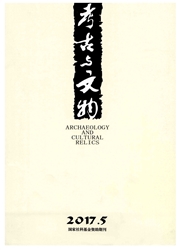

 中文摘要:
中文摘要:
通过对新石器时代关申地区北刘遗址(8000~5500BP)出土的人骨C和N稳定同位素的测试分析,揭示了当地先民的以粟类食物为主的食物结构;对该遗址早晚两期先民稳定同位素数据的比较分析,表明粟作农业在北刘晚期得到进一步发展。通过对比北刘遗址不同时期以及姜寨(6900~6000BP)、史家(6300~6000BP)遗址先民的食物结构,探索关中地区史前先民生活方式和食物结构的演变历程:从老关台文化期到仰韶文化期,粟类食物在先民食物结构中比例上升,粟作农业得到了较大发展;在仰韶文化期内,粟作农业存在先繁荣后衰退的现象。这种变化可能与关中地区新石器时代古气候条件的变化有关。
 英文摘要:
英文摘要:
This study presents the result of carbon and nitrogen stable isotopic analyses of human bones from the Beiliu site (from 8000 BP to 5500 BP) in order to reconstruct the palaeo-subsistence. The stable carbon values of human bone collagen show a domination of millet consumption, indicating that the palaeo-subsistence at the site was mainly based on millet agriculture. Comparing with other isotopic data of human bones from the Jiangzhai (6906-6000BP) and Shijia (6300--60(O BP ) sites, 6t3C values of human bones appear to rise from the Laoguantai to the Yangshao periods but to fall in the late Yangshao period. This apparent dietary shift matched with the climatic variation and agricultural development in the Guanzhong area very well.
 同期刊论文项目
同期刊论文项目
 同项目期刊论文
同项目期刊论文
 期刊信息
期刊信息
